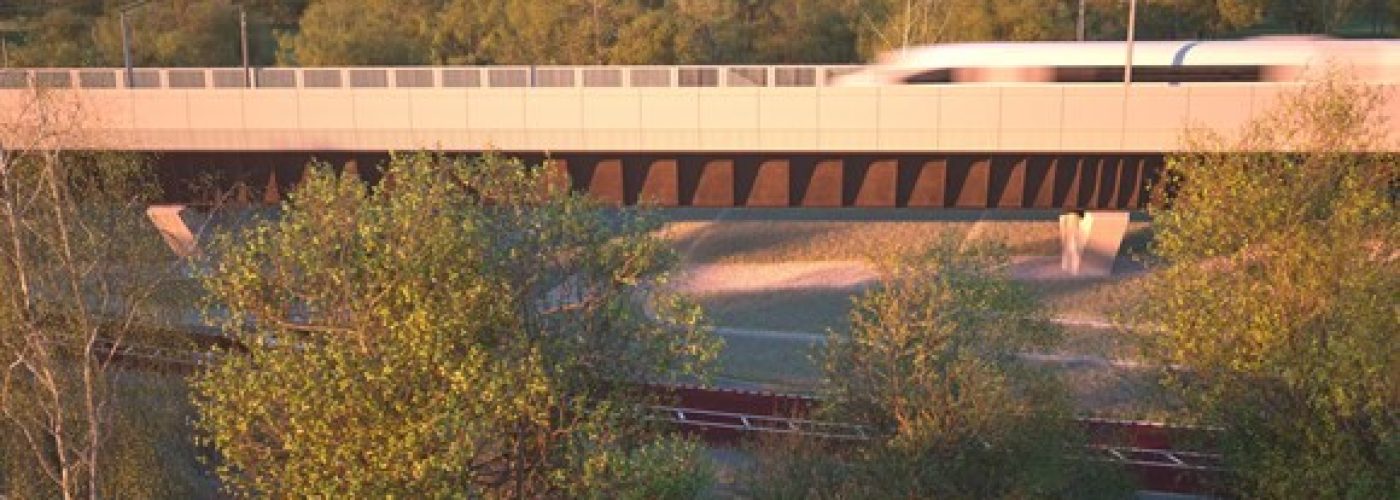In a first for the construction industry, technology originally developed to design and optimise automotive and aerospace structures, is being deployed to engineer some of the largest and most impressive structures on Britain’s new high speed rail network, High Speed 2.
As part of its Innovation programme, HS2 Ltd has teamed up with Leamington Spa-based Altair Ltd, to develop a unique, automated civil engineering design process driven by its software tool, OptiStruct®, that can reduce embedded carbon in HS2’s viaducts by up to 10 per cent, as well as shrink viaduct design time from around a month to as little as one hour.
Traditionally the engineering design process to set a viaduct’s geometry and quantify the required materials takes around four weeks. Once set, there is almost never any opportunity to revise designs due to the nature of project delivery schedules.
However, by harnessing what is essentially the same intelligent design technology that Altair uses to design components and assemblies within modern aircraft and automotive vehicles to minimise the amount of raw material used, the firm’s HS2 collaboration team has tested and refined the OptiStruct-driven process for the civil engineering sector.
The technology enables engineers to flex a viaduct’s design. For example, the span length between each supporting pier could be increased thereby reducing their overall number; or the deck carrying the train could be slimmed – all of which reduces cost, carbon and build time.
The technology takes a viaduct’s operational requirements, including the speed, frequency, and braking load of the high speed trains it will carry throughout its operational life. It then runs millions of design iterations based on the physical properties of all the materials it will be built with, including concrete and steel, to produce an optimised design.
By using building materials in the most efficient way, and without compromising strength or longevity, the two companies estimate OptiStruct could reduce the amount of carbon embedded in the structures by as much as 10 per cent.
Commenting, HS2 Ltd Senior Innovation Manager, Charlotte Hills said:
“HS2 is the biggest transport infrastructure project in the UK. To help build it we are drawing on the technology developed for other industries to help deliver the new high speed rail network and adding value to UK plc by creating new opportunities for innovative companies outside civil engineering.
“Working with Altair as part of our Innovation programme demonstrates the benefits of applying its technology to building HS2, and the potential it offers in the long term as an integral tool to streamline structural designs and reduce embedded carbon by as much as 10 per cent.”
Tomas Garcia, HS2 Ltd Head of Civil Engineering Structures said:
“Our innovation project with Altair is a game-changer. It gives engineers a tool to explore alternative designs that were not previously feasible due to time constraints. By cutting development time, running automatically dozens of combinations of the design variables, the technology allows to identify solutions that minimises embedded carbon.”
Altair Ltd’s Martin Kemp, Senior Technical Specialist said:
“Altair’s design and optimisation technologies have been utilised across industry for over two decades. However, we seldom see them deployed on structures as large as rail viaducts due to rigorous codes of practice. HS2 was determined to remove the barriers to adoption by integrating European Codes of Practice directly into the optimization process. The resulting capability brings cutting edge design and innovation to viaduct designers and opens further adoption in civil structure design.”
HS2 Ltd plans to mandate Altair’s technology for designing viaducts and bridges on Phases 2a and 2b for the high speed rail programme.
Building, Design & Construction Magazine | The Choice of Industry Professionals





